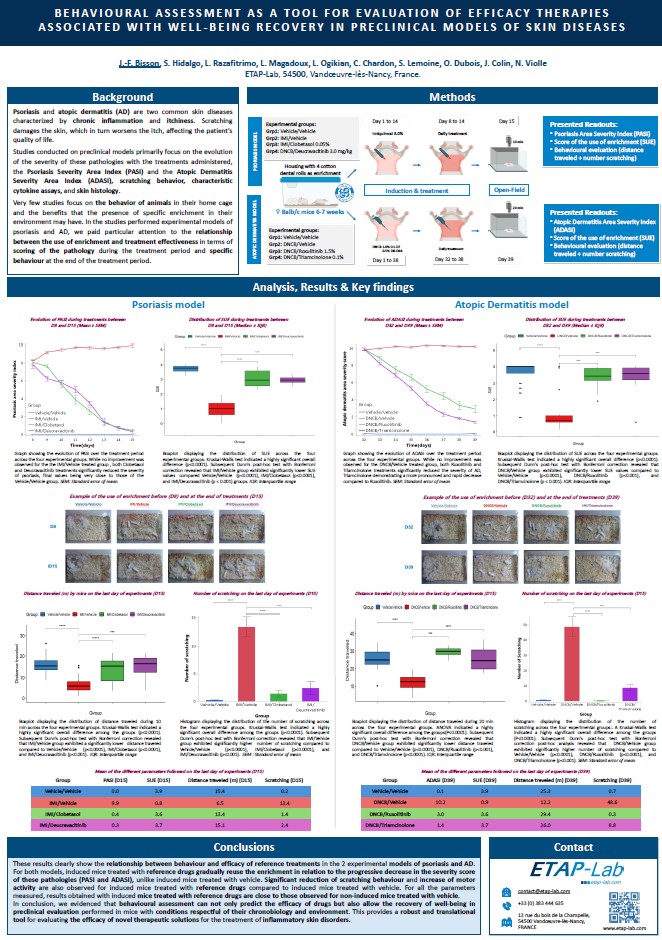
POSTER: Behavioural assessment as a tool for evaluation of efficacy therapies on skin diseases
J.-F. Bisson, S. Hidalgo, L. Razafitrimo, L. Magadoux, L. Ogikian, C. Chardon, S. Lemoine, O. Dubois, J. Colin, N. Violle - 2025
Dr Jean-François BISSON, PhD, and Lianna RAZAFITRIMO, presented the team’s research during the SPIN 2025 (Congress of the Skin Inflammation & Psoriasis International Network) in the poster: « Behavioural assessment as a tool for evaluation of efficacy therapies associated with well-being recovery in preclinical models of skin diseases ».
Learn more about our preclinical services in Dermatology in the poster!
Until the poster is available here, don’t wait any longer and ask for the poster in PDF!
EASY REQUEST OF POSTER
Authors: J.-F. Bisson, S. Hidalgo, L. Razafitrimo, L. Magadoux, L. Ogikian, C. Chardon, S. Lemoine, O. Dubois, J. Colin, N. Violle
Abstract:
Psoriasis and atopic dermatitis (AD) are two common skin diseases characterized by chronic inflammation and itchiness. Scratching damages the skin, which in turn worsens the itch, affecting the patient’s quality of life.
We evidenced that behavioural assessment can not only predict the efficacy of drugs but also allow the recovery of well-being in preclinical evaluation performed in mice with conditions respectful of their chronobiology and environment.
In studies conducted over ten years in the Imiquimod-induced psoriasis (n=18) and DNCB-induced AD (n=14) models in BALB/c mice, reproducible and significant results were observed. Mice were treated during the last week of experiments by daily topical application with placebo or reference drugs, Clobetasol and Calcipotriol for psoriasis, Ruxolitinib and Triamcinolone for AD. All along this period, the Psoriasis Area Severity Index (PASI) and its equivalent Atopic Dermatitis Area Severity Index (ADASI) were monitored, as well as body weight and the use of cotton dental rolls as enrichment. At the end of experiments, a behavioural evaluation was performed to evaluate the effects of treatments on scratching behaviour and motor activity of animals.
Before treatments, induced mice no longer use or almost no longer use the enrichment. Mice treated with reference drugs gradually reuse the enrichment in correlation with the progressive decrease in PASI and ADASI scores, unlike mice treated with the placebo. Reduced scratching behaviour and increased motor activity of reference treated mice were also observed compared to placebo treated mice.
Our experimental conditions allow to follow efficacy and recovery of well-being of mice.




